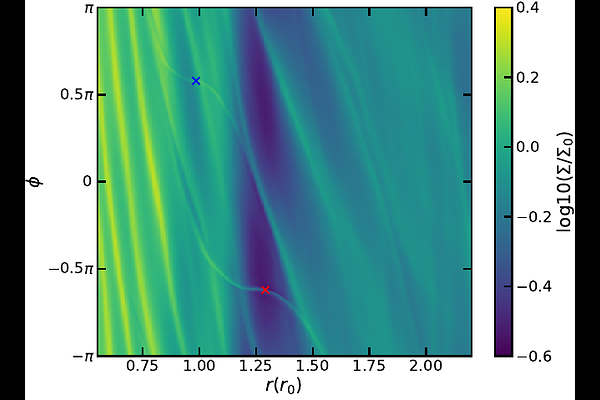Capture and Escape of Planetary Mean-motion Resonances in Turbulent Discs

Capture and Escape of Planetary Mean-motion Resonances in Turbulent Discs
Yi-Xian Chen, Yinhao Wu, Ya-Ping Li, Douglas N. C. Lin, Richard Alexander, Sergei Nayakshin, Fei Dai
AbstractMean-motion resonances (MMRs) form through convergent disc migration of planet pairs, which may be disrupted by dynamical instabilities after protoplanetary disc (PPD) dispersal. This scenario is supported by recent analysis of TESS data showing that neighboring planet pairs in younger planetary systems are closer to resonance. To study stability of MMRs during migration, we perform hydrodynamical simulations of migrating planet pairs in PPDs, comparing the effect of laminar viscosity and realistic turbulence. We find stable 3:2 resonance capture for terrestrial planet pairs migrating in a moderately massive PPD, insensitive to a range of laminar viscosity (alpha = 0.001 to 0.1). However, realistic turbulence enhances overstability by sustaining higher equilibrium eccentricities and a positive growth rate in libration amplitude, ultimately leading to resonance escape. The equilibrium eccentricity growth rates decrease as planets migrate into tighter and more stable 4:3 and 5:4 MMRs. Our results suggest that active disc turbulence broadens the parameter space for overstability, causing planet pairs to end up in closer-in orbital separations. Libration within MMR typically lead to deviation from exact period ratio |Delta| \sim 0.5%, which alone is insufficient to produce the typical dispersion of |Delta| \sim 1 to 3% in TESS data, suggesting that post migration dynamical processes are needed to further amplify the offset.